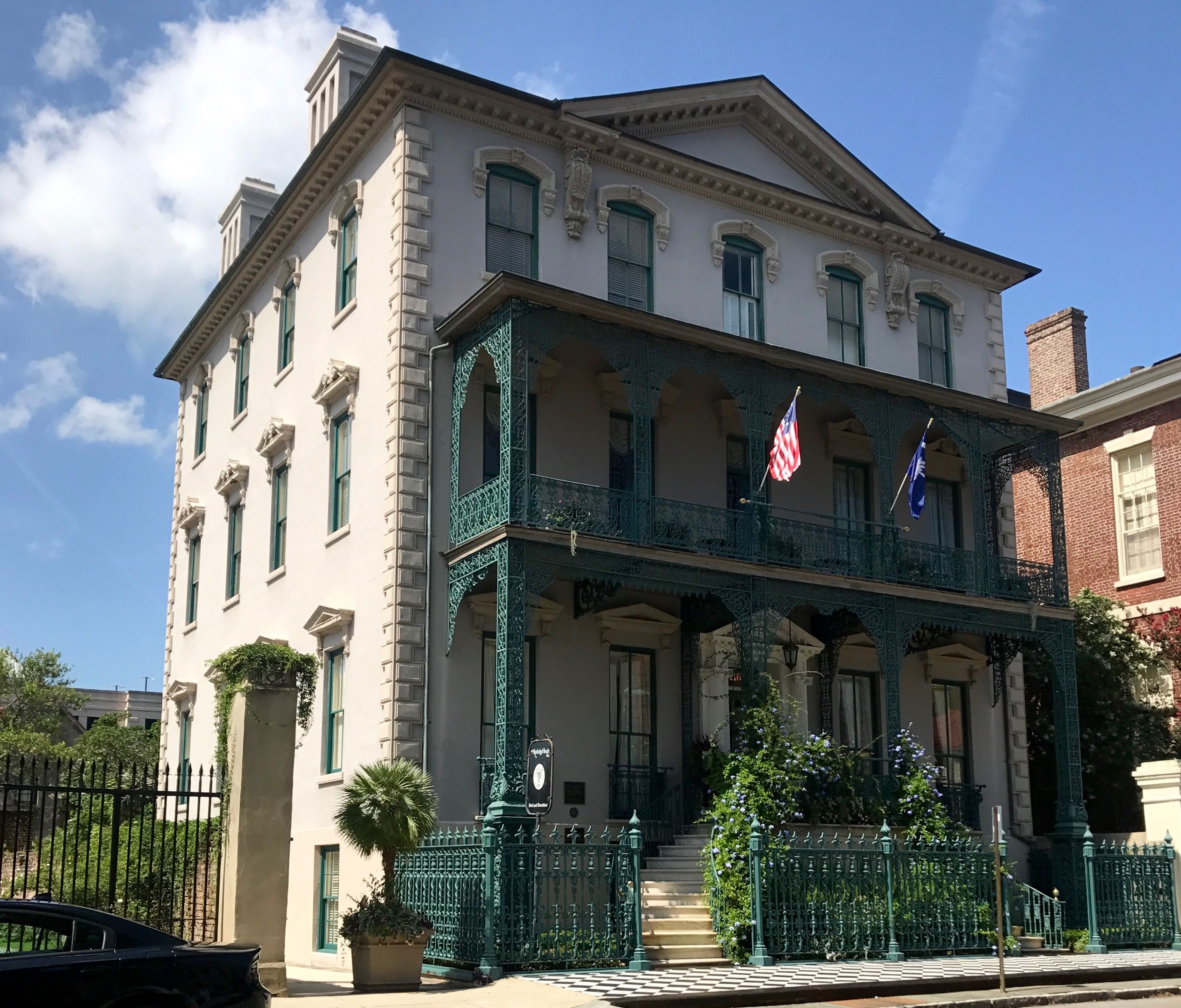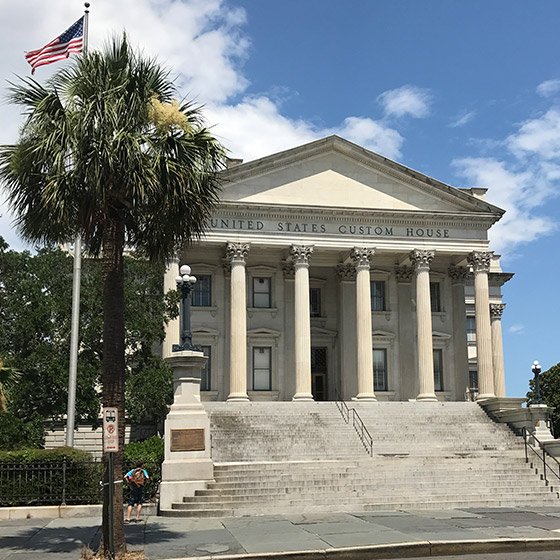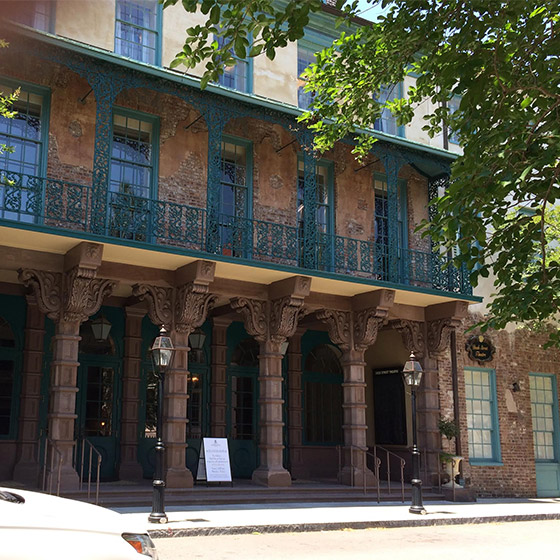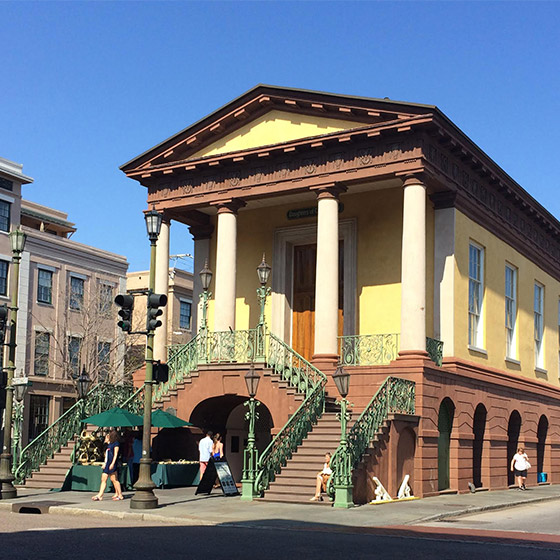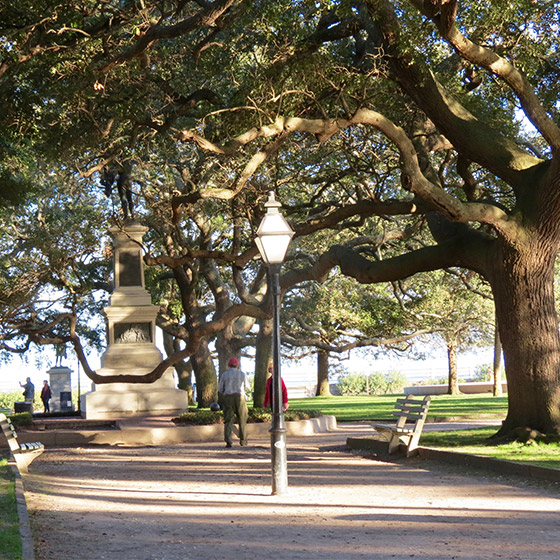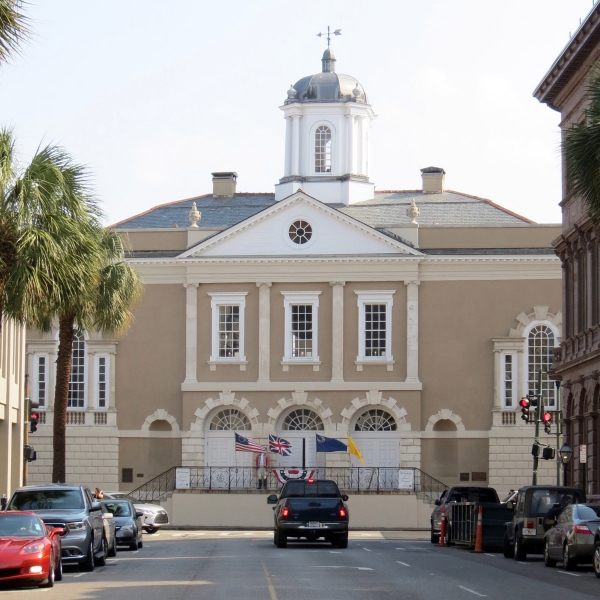The month of July is associated with the founding of our nation, and my next several diary posts will highlight the Charleston homes of some of our founding fathers. I start with John Rutledge and his home at 116 Broad Street. Built around 1763 for his bride, you have to imagine it without (1) the top floor and (2) all the cast ironwork, both of which were additions by later owners to the structure. In 1763 it would have been recognizable as a fine Georgian-style house, embodying the principles of balance and harmony as essential to that period.
116 Broad Street was built for John’s bride, Elizabeth Grimke, and it speaks of his love and high regard for her. They had ten children and were married for approximately 30 years until Elizabeth’s death in 1792.

